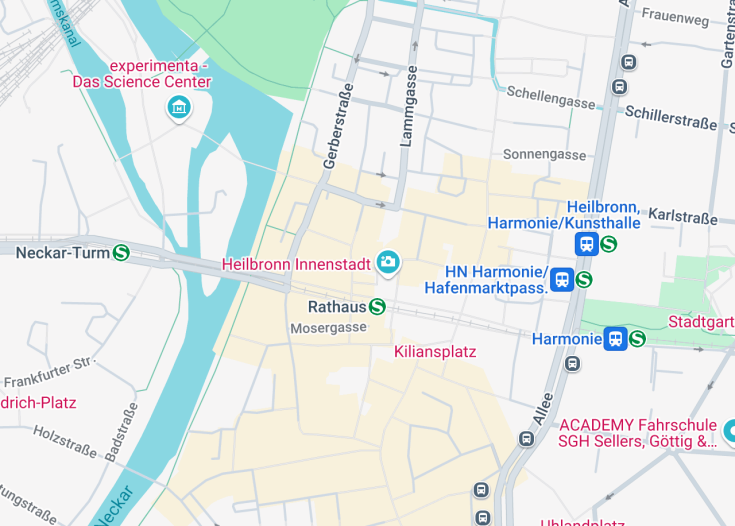Germany boasts some of the world’s most fascinating astronomical clocks, a testament to its rich history in astronomy and clockmaking. These intricate timepieces, located in various historic buildings and cathedrals, don’t just tell time but also showcase celestial phenomena. Highlights include the clocks in Prague, Strasbourg, and Munich, each offering a unique glimpse into medieval craftsmanship and astronomical knowledge. These clocks, featuring astrolabes, calendars, and automatons, turn a simple time check into a complex representation of the universe’s workings.
To fully appreciate the intricate details of Germany’s astronomical clocks, consider visiting during a guided tour. These tours typically delve into the historical and technical aspects, enhancing your understanding of these masterpieces.
If you’re planning to visit one of these sites, try to sync your visit with the clock’s special animation display, usually occurring at the hour. This offers a more dynamic experience of these ancient time tellers.
Astronomical Clock: A Portal Through Time
The Astronomical Clock in Heilbronn, Germany, is not just a device to tell time but a historic artifact that captivates tourists with its intricate craftsmanship and historical significance. Located in the heart of Heilbronn, this medieval clock is a masterpiece of engineering from a bygone era, offering a glimpse into the sophistication of medieval technology. Tourists are often mesmerized by its detailed dials and zodiac signs, which illustrate the position of the sun, moon, and stars.
It’s a testament to the city’s rich cultural heritage and an enduring symbol of timekeeping from centuries past. Each aspect of the clock tells a story, affording visitors a unique opportunity to step back in time and experience the confluence of art, science, and history. Therefore, the Astronomical Clock is a must-visit for anyone interested in the enchanting narrative of human ingenuity.
Exploring the Mechanics and Artistry
Visitors to the Astronomical Clock can delve into both the artistic and scientific aspects that make up this remarkable timepiece. The clock features not just conventional time tracking but also astronomical displays that intrigue science enthusiasts and casual visitors alike. Interactive displays nearby explain the clock’s mechanisms in a simple language, making it accessible to everyone.
Additionally, guided tours are available, sometimes led by costumed interpreters who bring the history of the clock to life. These tours offer insights into the clock’s design and the historical context of its creation, enriching the visitor experience and providing a deeper understanding of the era’s technological advancements.
A Closer Look at the Zodiac Dials
One of the key attractions of the Astronomical Clock in Heilbronn is its zodiac dials. These elegantly crafted features not only display the traditional zodiac signs but also serve as a calendar system, marking the sun’s entry into a new zodiac sign. This helps illustrate the linkage between timekeeping and astrology during the Middle Ages.
The intricate details and symbolism engraved on each zodiac dial offer a fascinating insight into medieval beliefs and the role of astronomy in daily life. This aspect of the clock is particularly appealing to those interested in astronomy and the historical perception of the cosmos.
Explore the wonders of the astronomical clock
This iconic destination is a marvel for all age groups, ranging from curious kids who are fascinated by gears and time, couples seeking a romantic backdrop, to older individuals appreciating historical craftsmanship. Upon visiting the Astronomical Clock, one can expect an enthralling experience that combines art, engineering, and history seamlessly.
Originally crafted to measure astronomical bodies, the Astronomical Clock provides a unique glance into the past ways of timekeeping and celestial observations. Its intricate design and historical significance make it not only a visual spectacle but also an educational journey into the mechanics of early astronomical instruments. Visitors can enjoy the intricate details of the dial, which features astrological signs, phases of the moon, and other astronomical data.
Discover the best time to unveil the mysteries of the astronomical clock
The ideal time to visit the Astronomical Clock is during the spring or fall when the weather is mild and pleasant, enhancing the overall experience of your visit. These seasons provide a comfortable environment for exploring the surrounding area and appreciating the clock’s intricate design without the extremes of summer or winter.
Annual events
Consider planning your visit around the annual Clock Festival, a captivating event where the history and mechanics of the clock are celebrated with guided tours, workshops, and interactive exhibits. This festival is usually held in mid-October and is a unique opportunity to delve deeper into the clock’s historical context and significance.
Understanding accessibility and limitations
The Astronomical Clock, being a historical monument, has certain limitations and accessibility features that one should be aware of before planning a visit.
Accessibility
Accessibility at the Astronomical Clock is facilitated through ramps and tactile tours available upon request for those with mobility issues or visual impairments. However, some parts of the facility may not be wheelchair accessible due to architectural limitations.
Limitations
Due to its historical nature, the following restrictions are in place to preserve the integrity of the Astronomical Clock:
- No flash photography
- No touching of the clock mechanisms
- Bag size restrictions to prevent accidental damages
Notes to visitors
Please consider these additional notes for a smooth visit:
- Guided tours are available and recommended for a comprehensive understanding
- Be mindful of the posted signs and barriers
- Booking in advance is advisable during peak seasons or special events
General information
Essential details for planning your visit to the Astronomical Clock
Location
The Astronomical Clock is conveniently located near major city landmarks and transport hubs, making it an accessible destination for travelers and locals alike.
Address:
The full address is provided at the booking official site or local tourism information centres.
Opening hours
The Astronomical Clock welcomes visitors from 9 AM to 5 PM every day except for public holidays.
Transport options to reach the Astronomical Clock
Reaching the Astronomical Clock in Heilbronn is convenient due to its well-connected status via various modes of transportation.
Car
Approaching by car is practical with several parking options available nearby. Consider car rentals or driving down from major nearby cities.
| Route | Distance | Travel time |
|---|---|---|
| From Stuttgart | 50 km | 45 minutes |
| From Mannheim | 125 km | 90 minutes |
| From Nuremberg | 180 km | 2 hours |
Train
Trains are a viable and eco-friendly alternative. Heilbronn Central Station is the closest hub, with regular services linking the city to other major urban centers.
| Route | Distance | Travel time |
|---|---|---|
| From Stuttgart | 50 km | 45 minutes |
| From Mannheim | 125 km | 90 minutes |
| From Nuremberg | 180 km | 2 hours |
Nearby attractions
Explore these attractions all within close proximity to the Astronomical Clock:
- Heilbronn City Museum – 0.5 km (0.3 mi)
- Trappensee Castle – 2 km (1.24 mi)
- Eibensbach Vineyards – 5 km (3.1 mi)
- Experimenta Science Center – 1 km (0.62 mi)
- Götz Tower – 0.8 km (0.5 mi)
- Heilbronn Theatre – 1.5 km (0.93 mi)
- Harbor Market Place – 1 km (0.62 mi)
- Old Town Heilbronn – 0.6 km (0.37 mi)
- Botanical Orchard – 3 km (1.86 mi)
- City Park Heilbronn – 2.5 km (1.55 mi)
- Hollenbach River Reserve – 4 km (2.48 mi)
- Weberberg Historic District – 2 km (1.24 mi)
Common questions
What is the history of the Astronomical Clock in Heilbronn, Germany?
Installation and Early Function
The clock was commissioned as part of the broader renovation of the Heilbronn Town Hall. Crafted by the master clockmaker Isaak Habrecht, the clock became a centerpiece of the building. Habrecht, who would later contribute to the famous astronomical clock in Strasbourg, designed the Heilbronn clock to showcase both the time and the movement of celestial bodies, which was of great importance to the Renaissance worldview.
The clock was built with several dials that showed not only the time but also the phases of the moon, the position of the sun, and the zodiac, which were commonly used to inform agricultural practices and civic planning. It functioned as a civic timekeeper and an astronomical teaching tool, helping the citizens of Heilbronn understand the relationship between time and the heavens.
Modifications and Maintenance
Throughout the centuries, the clock underwent numerous modifications. As scientific understanding evolved, minor adjustments were made to ensure the clock remained accurate. Mechanical parts were repaired or replaced, especially as wear and tear began to affect its precision.
By the 19th century, the clock had become more of a historical relic than a functional scientific instrument. Nevertheless, it remained a cherished symbol of the city’s Renaissance heritage and technological achievements.
Destruction and Restoration
During World War II, Heilbronn was extensively bombed, and the Town Hall, along with the Astronomical Clock, suffered significant damage. The destruction in December 1944 left the clock in ruins, and it was not until the 1950s that restoration efforts began in earnest. The post-war restoration was a meticulous process aimed at both rebuilding the physical structure of the clock and restoring its astronomical functions.
By 1953, the clock had been fully restored to its original state, including the intricate dials and astronomical displays. The restoration maintained as much of the original mechanism as possible, ensuring that the clock could continue functioning both as a timepiece and an astronomical tool.
How does the Astronomical Clock in Heilbronn function?
Is there any restoration work done on the Astronomical Clock in Heilbronn?
How can tourists best experience the Astronomical Clock in Heilbronn?
What type of maintenance is required for the Astronomical Clock in Heilbronn?
Are there any similar astronomical clocks in the world compared to Heilbronn’s?
What materials are used in the construction of the Astronomical Clock in Heilbronn?
How is the time adjusted on the Astronomical Clock in Heilbronn?
What is the significance of the Astronomical Clock to Heilbronn’s cultural heritage?
How often does the Astronomical Clock in Heilbronn get wound?

Is the astronomical clock in Heilbronn worth visiting?
The Astronomical Clock in Heilbronn is not just a time-keeping device but a piece of art rich in history and intricacy. Perfectly situated in the heart of Heilbronn, this clock attracts visitors who are keen to witness an exceptional representation of medieval engineering and astronomical movements. The clock displays not merely the time but also astrological constellations, providing insights into how people from the past viewed the universe.
However, while its historical and mechanical relevance is indisputable, those not particularly interested in astronomy or mechanical design might not find it as fascinating. Its appeal is somewhat niche, catering primarily to those with an affinity for history, astronomy, or mechanics. Therefore, while it is undeniably worth visiting for specific interests, it might not captivate the general tourist looking for a varied cultural experience.










